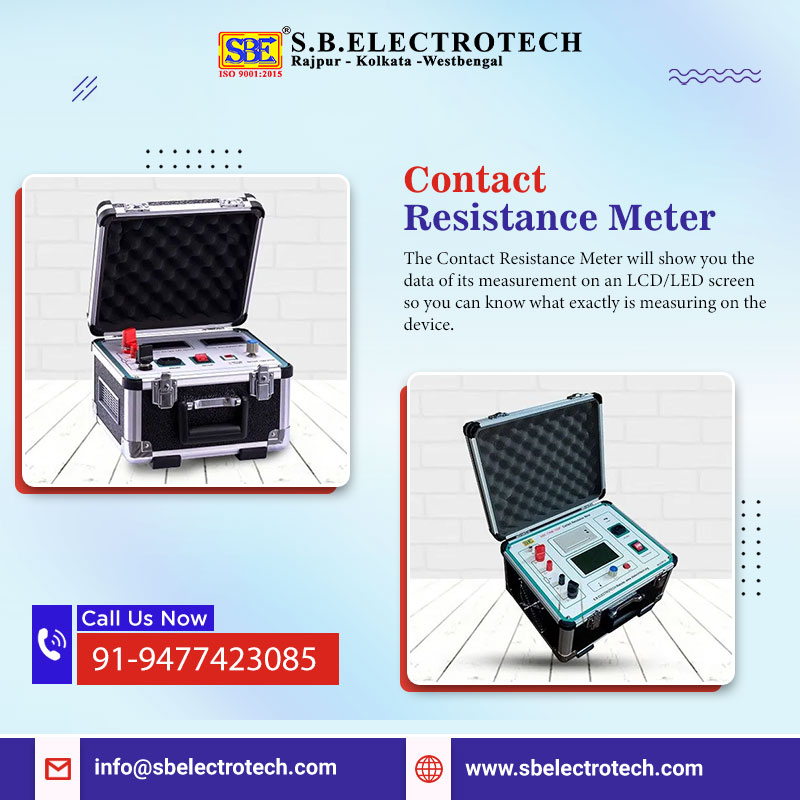A Detailed Guide to Contact Resistance Meter
In diverse industries, from high-voltage power grids to intricate electronics, ensuring reliable electrical connections is paramount. But where connections exist, the possibility of resistance arises. This can have detrimental effects, leading to malfunction, heat generation, and even equipment failure. That's where contact resistance meters come into play, acting as crucial tools for maintaining optimal performance and safety.
This specialized instrument accurately measures the resistance at electrical connection points. But how exactly does this device work? In this detailed guide, we will share everything about these resistance measurement devices.
Understanding Contact Resistance
Before diving into the main topic, let's understand the concept of contact resistance itself. Every electrical connection, from simple soldered joints to complex relays, introduces a small amount of resistance.
When two conductors touch, their surfaces aren't in perfect contact due to microscopic irregularities. This microscopic gap creates resistance to the flow of current, even if the bulk materials themselves are highly conductive. This resistance, known as contact resistance, can be influenced by various factors like surface roughness, oxidation, and applied pressure.
While seemingly insignificant in some cases, contact resistance can accumulate over multiple connections, causing voltage drops, power losses, and heat generation. In critical applications like high-power circuits or sensitive electronics, even minor resistance values can lead to significant problems.
Contact Resistance Meter: A Detailed Overview
Contact resistance meters, also known as micro-ohmmeters, are specialized instruments designed to measure these minute resistances with high accuracy. Unlike regular multimeters, these meters employ techniques to overcome challenges associated with measuring such low values.
What is the working principle of a contact resistance meter?
The heart of a contact resistance meter lies in its four-wire measurement technique. This method utilizes separate pairs of wires for current injection and voltage sensing. This eliminates the impact of lead resistance, which would otherwise distort the reading in conventional two-wire measurements.
Here's a breakdown of the process:
- Current Injection: The meter sends a known, precise current through the connection using the first pair of wires. This current serves as the reference for resistance calculation.
- Voltage Sensing: The second pair of wires, positioned closely at the point of contact, measures the voltage drop across the connection. This voltage drop is directly proportional to the contact resistance.
- Resistance Calculation: Using the measured current and voltage values, the meter calculates the contact resistance according to Ohm's Law (R = V/I). The advanced circuitry ensures high accuracy and eliminates the influence of lead resistance, providing a reliable picture of the actual contact resistance.

Features of a Contact Resistance Meter
Modern contact resistance meters offer more than just basic measurement capabilities. Some advanced features include:
- Multiple Current Ranges: Meters often provide selectable current ranges, allowing for measurements across a wider resistance spectrum.
- Pass/Fail Limits: Users can define acceptable resistance thresholds, with the meter indicating if the measured value falls within the desired range.
- Data Storage and Output: Measurements can be saved for further analysis or reports, and some meters offer connectivity to PCs for advanced data management.
Applications: Where Contact Resistance Matters
Contact resistance meters find diverse applications across various industries:
- Power Distribution: Ensuring efficient current flow in substation equipment, busbars, and switchgear.
- Automotive Industry: Testing contact resistance in connectors, relays, and battery connections.
- Aerospace and Defense: Verifying reliable connections in critical aircraft and spacecraft systems.
- Manufacturing: Quality control for welded joints, soldered connections, and other assembly processes.
Conclusion: Ensuring Electrical Integrity
This blog post offers a general overview of contact resistance meters and their working principle. These meters are essential tools for ensuring the integrity and performance of electrical connections across diverse industries. Whether maintaining power grids, ensuring product quality, or safeguarding equipment, these instruments play a crucial role in guaranteeing reliable and efficient electrical operations.


No comments yet